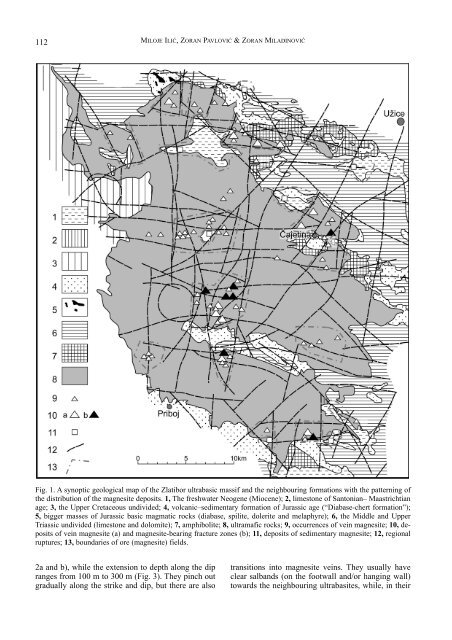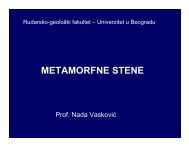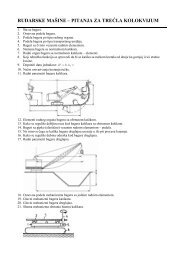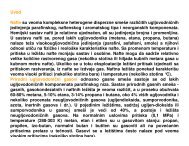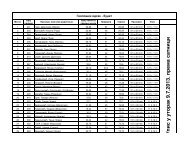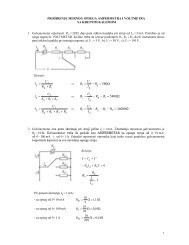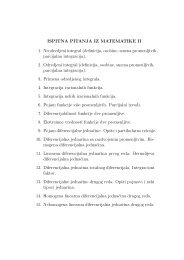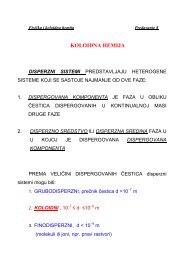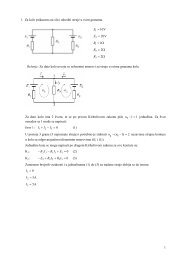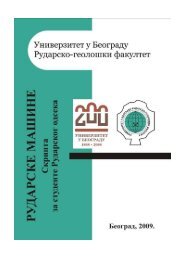KÑига LXXII
KÑига LXXII
KÑига LXXII
Create successful ePaper yourself
Turn your PDF publications into a flip-book with our unique Google optimized e-Paper software.
112<br />
MILOJE ILIĆ, ZORAN PAVLOVIĆ & ZORAN MILADINOVIĆ<br />
Fig. 1. A synoptic geological map of the Zlatibor ultrabasic massif and the neighbouring formations with the patterning of<br />
the distribution of the magnesite deposits. 1, The freshwater Neogene (Miocene); 2, limestone of Santonian– Maastrichtian<br />
age; 3, the Upper Cretaceous undivided; 4, volcanic–sedimentary formation of Jurassic age (“Diabase-chert formation”);<br />
5, bigger masses of Jurassic basic magmatic rocks (diabase, spilite, dolerite and melaphyre); 6, the Middle and Upper<br />
Triassic undivided (limestone and dolomite); 7, amphibolite; 8, ultramafic rocks; 9, occurrences of vein magnesite; 10, deposits<br />
of vein magnesite (a) and magnesite-bearing fracture zones (b); 11, deposits of sedimentary magnesite; 12, regional<br />
ruptures; 13, boundaries of ore (magnesite) fields.<br />
2a and b), while the extension to depth along the dip<br />
ranges from 100 m to 300 m (Fig. 3). They pinch out<br />
gradually along the strike and dip, but there are also<br />
transitions into magnesite veins. They usually have<br />
clear salbands (on the footwall and/or hanging wall)<br />
towards the neighbouring ultrabasites, while, in their


